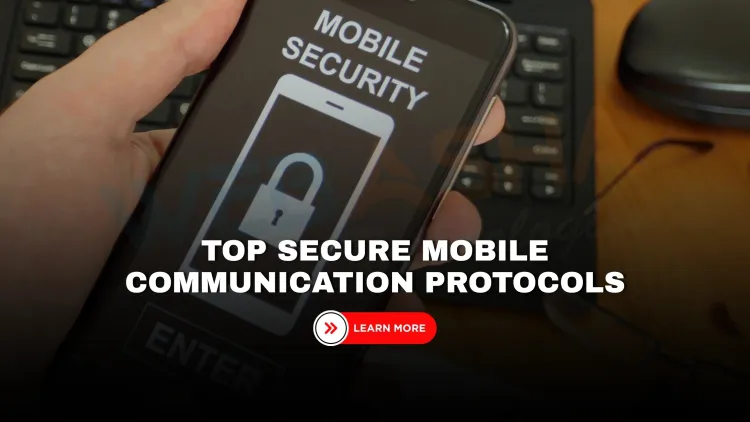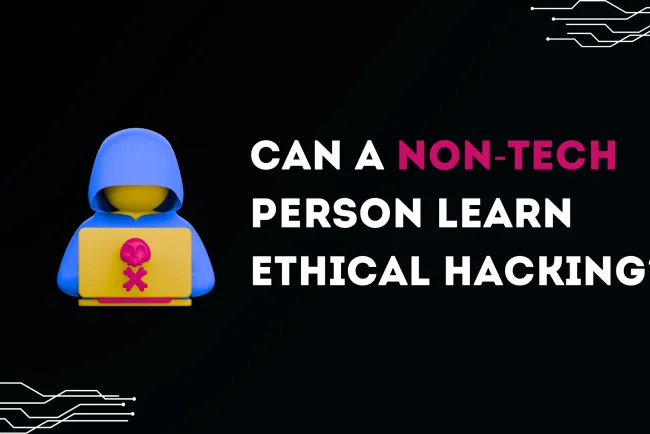Top Secure Mobile Communication Protocols You Should Know in 2025 | The Detailed Guide
Learn how secure mobile communication protocols like TLS, IPSec, and Signal Protocol protect your smartphone data from hackers, identity theft, and cyberattacks.

With smartphones being a central part of modern life, protecting the communication that flows through them is critical. From online banking to business emails and personal chats, mobile devices handle sensitive information that cybercriminals constantly target. This blog explains what secure mobile communication protocols are, how they work, and why they're essential for everyday security.
What Are Secure Mobile Communication Protocols?
Secure mobile communication protocols are rules and standards that ensure the safe transfer of information between mobile devices and networks. These protocols encrypt data, verify identities, and maintain privacy, preventing hackers from eavesdropping or tampering with your communication.
Examples include:
-
TLS (Transport Layer Security)
-
IPSec (Internet Protocol Security)
-
Signal Protocol
-
WPA3 (Wi-Fi Protected Access 3)
-
5G Security Protocols
Why Are Secure Mobile Communication Protocols Important?
-
Protects personal and business data: Ensures sensitive information like passwords, chats, and bank details aren’t intercepted.
-
Prevents identity theft: Secure protocols verify the sender and receiver’s identity.
-
Supports regulatory compliance: Organizations must follow data protection laws like GDPR and HIPAA.
-
Blocks cyberattacks: Stops man-in-the-middle attacks, eavesdropping, and data tampering.
Most Common Secure Mobile Communication Protocols
1️⃣ TLS (Transport Layer Security)
-
Purpose: Secures web browsing, mobile apps, emails.
-
How it works: Encrypts data between apps and servers using certificates and keys.
-
Where used: Mobile browsers, payment apps, social media apps.
2️⃣ IPSec (Internet Protocol Security)
-
Purpose: Protects data at the network layer.
-
How it works: Encrypts and authenticates IP packets.
-
Where used: VPN apps, secure remote work tools.
3️⃣ Signal Protocol
-
Purpose: End-to-end encryption for messages.
-
How it works: Uses double ratchet algorithm to create unique keys for every message.
-
Where used: Messaging apps like Signal, WhatsApp, Google Messages.
4️⃣ WPA3 (Wi-Fi Protected Access 3)
-
Purpose: Protects wireless network communications.
-
How it works: Encrypts Wi-Fi traffic and improves password security.
-
Where used: Public and private Wi-Fi networks.
5️⃣ 5G Security Protocols
-
Purpose: Secures mobile network data.
-
How it works: Adds encryption, integrity protection, and privacy improvements over older 4G protocols.
-
Where used: Mobile calls, SMS, mobile internet through 5G networks.
How Mobile Communication Is Encrypted: Step by Step
1️⃣ Handshake: Devices agree on encryption methods and exchange public keys.
2️⃣ Session Key Generation: A unique key is generated for that session.
3️⃣ Data Transmission: Messages, files, and other data are encrypted with the session key.
4️⃣ Decryption: Only the intended recipient can decrypt and read the information.
Real-World Examples
| Protocol | Use Case | App/Service Example |
|---|---|---|
| TLS | Secure online payments | Google Pay, Apple Pay |
| IPSec | VPN connections | NordVPN, ExpressVPN |
| Signal Protocol | Private messaging | WhatsApp, Signal |
| WPA3 | Wi-Fi protection | Public Wi-Fi |
| 5G Security | Cellular network security | 5G-enabled smartphones |
Threats Prevented by Secure Mobile Protocols
-
Eavesdropping
-
Data interception
-
Identity theft
-
Man-in-the-middle attacks
-
Session hijacking
Challenges and Considerations
-
Performance Overhead: Encryption can slightly reduce speed.
-
Device Compatibility: Older devices may not support the latest protocols.
-
Misconfiguration: Incorrect setup can leave gaps in security.
Best Practices for Secure Mobile Communication
-
Always use apps that implement strong encryption protocols like TLS and Signal Protocol.
-
Keep your device’s OS and apps updated to support the latest security features.
-
Use VPN apps with IPSec when connecting over public Wi-Fi.
-
Enable WPA3 on your home Wi-Fi router if available.
-
Avoid using outdated communication apps that don’t support encryption.
Conclusion
Secure mobile communication protocols are not just for tech experts—they protect everyone using smartphones today. Whether you’re messaging friends, accessing sensitive work files, or shopping online, these protocols quietly work in the background to keep your data safe.
FAQs:
What are secure mobile communication protocols?
Secure mobile communication protocols are rules that protect data transfer on mobile devices using encryption, authentication, and privacy mechanisms.
Why is mobile communication security important today?
Smartphones handle sensitive tasks like banking and messaging, making them prime targets for hackers. Protocols keep this communication safe.
What is TLS and how does it protect mobile data?
TLS (Transport Layer Security) encrypts data between mobile apps and servers, ensuring secure web browsing and app communication.
Where is IPSec commonly used in mobile devices?
IPSec is used in VPN apps to encrypt and authenticate IP packets, securing internet connections on mobile devices.
How does the Signal Protocol work?
Signal Protocol uses end-to-end encryption and the double ratchet algorithm to generate unique keys for every message, enhancing privacy.
What is WPA3 and why is it better than WPA2?
WPA3 provides stronger encryption for Wi-Fi networks and protects against brute-force attacks, improving Wi-Fi communication security.
What are 5G security protocols?
5G security protocols include enhanced encryption, integrity protection, and privacy measures for mobile networks.
Which apps use Signal Protocol?
Apps like WhatsApp, Signal, and Google Messages use the Signal Protocol for secure messaging.
How does VPN improve mobile communication security?
VPNs encrypt all traffic through secure tunnels, preventing eavesdropping, especially on public Wi-Fi.
Can public Wi-Fi be made secure using protocols?
Yes, WPA3 and VPNs using IPSec can significantly enhance public Wi-Fi security.
What’s the difference between TLS and IPSec?
TLS works at the application layer (e.g., browsers), while IPSec secures data at the network layer, such as in VPN connections.
Are secure mobile protocols needed if I use antivirus apps?
Yes, because antivirus tools protect against malware, but encryption protocols secure your data during transmission.
Is end-to-end encryption the same as VPN encryption?
No. End-to-end encryption secures communication between sender and receiver. VPN encrypts data between your device and the VPN server.
What are the risks of not using secure communication protocols?
You risk data interception, identity theft, and man-in-the-middle attacks without secure protocols.
Can mobile apps be secure without TLS?
No. TLS is a standard for secure data exchange. Apps without it risk exposing sensitive user data.
How does encryption impact mobile device performance?
While encryption adds some overhead, modern devices handle it efficiently, with minimal impact on performance.
Do older smartphones support modern protocols like WPA3?
Not always. Older hardware may not be compatible with the latest security protocols like WPA3 and 5G encryption.
What kind of encryption is used in online payments on mobile?
Protocols like TLS encrypt online payments in apps such as Google Pay and Apple Pay.
Which VPN apps use IPSec on mobile?
Popular VPN apps like NordVPN, ExpressVPN, and Cisco AnyConnect use IPSec for secure mobile connectivity.
What role does the handshake play in mobile encryption?
The handshake initiates secure communication by agreeing on encryption methods and exchanging keys between devices.
How does session key generation work?
A unique encryption key is created for each communication session to ensure data is secure and cannot be reused.
What happens during data decryption on mobile?
The recipient's device uses a private key or shared session key to decrypt and access the original message or data.
Is Signal Protocol open source?
Yes, Signal Protocol is open-source and widely adopted for secure messaging due to its transparency and security.
How can I check if my mobile app uses TLS?
You can check app documentation or use tools like packet sniffers (e.g., Wireshark) to verify secure connections.
Can encrypted mobile communication be hacked?
While difficult, it’s possible through poor implementation, outdated protocols, or misconfigured devices.
Are secure protocols mandatory for compliance standards like GDPR?
Yes, secure communication is essential for GDPR, HIPAA, and other regulatory frameworks to protect user data.
What’s the best protocol for secure messaging?
Signal Protocol is widely regarded as the most secure protocol for private mobile messaging.
Do iPhones and Android devices use the same security protocols?
Both platforms support similar protocols (TLS, IPSec, WPA3), but implementation and settings may differ.
How can I ensure my smartphone uses secure communication?
Use updated apps, enable secure Wi-Fi, install trusted VPNs, and verify encryption protocols are in use.
Can 5G networks be hacked like older 4G?
5G offers better protection, but like all tech, it's still vulnerable if not implemented correctly or used on unsecured devices.














![Top 10 Ethical Hackers in the World [2025]](https://www.webasha.com/blog/uploads/images/202408/image_100x75_66c2f983c207b.webp)








